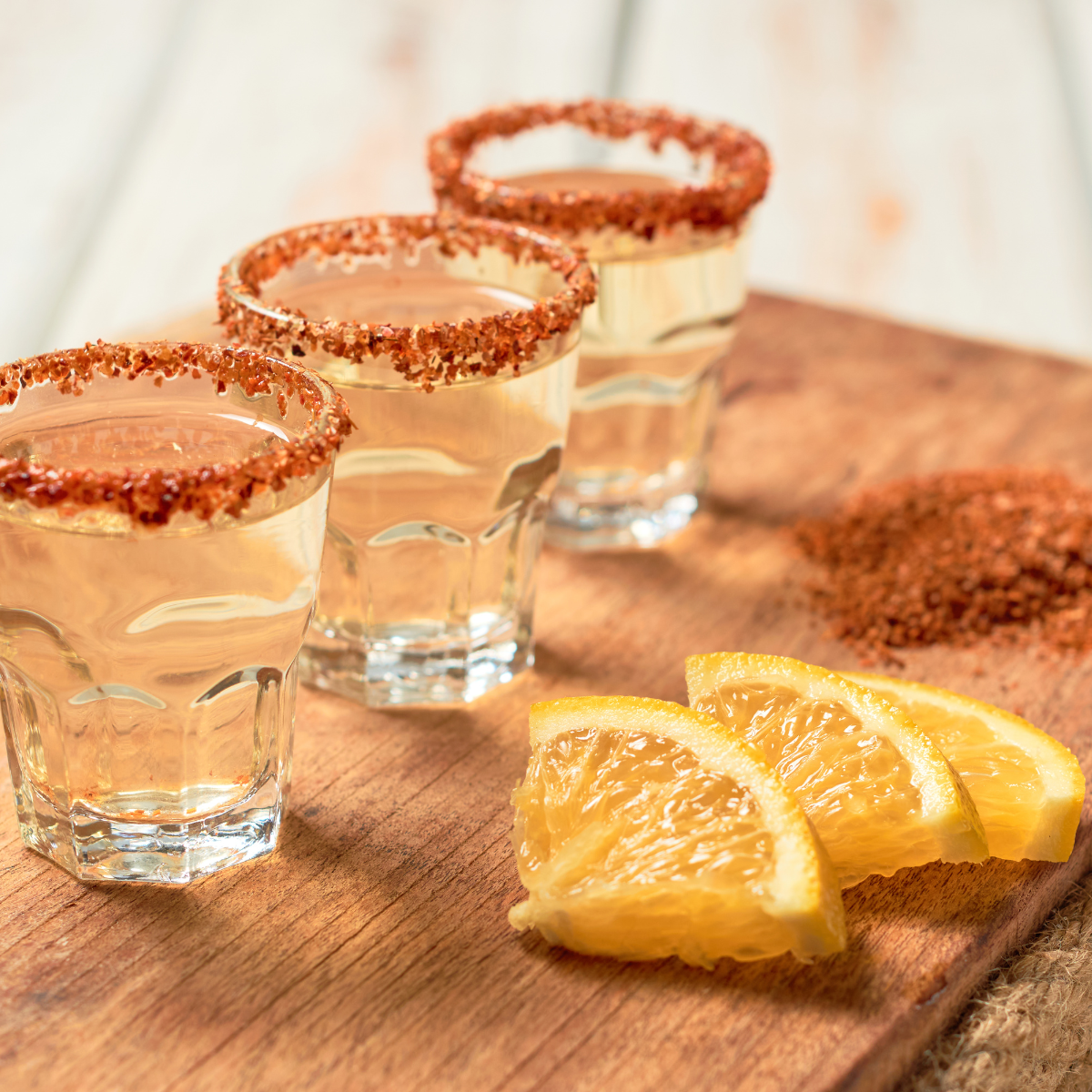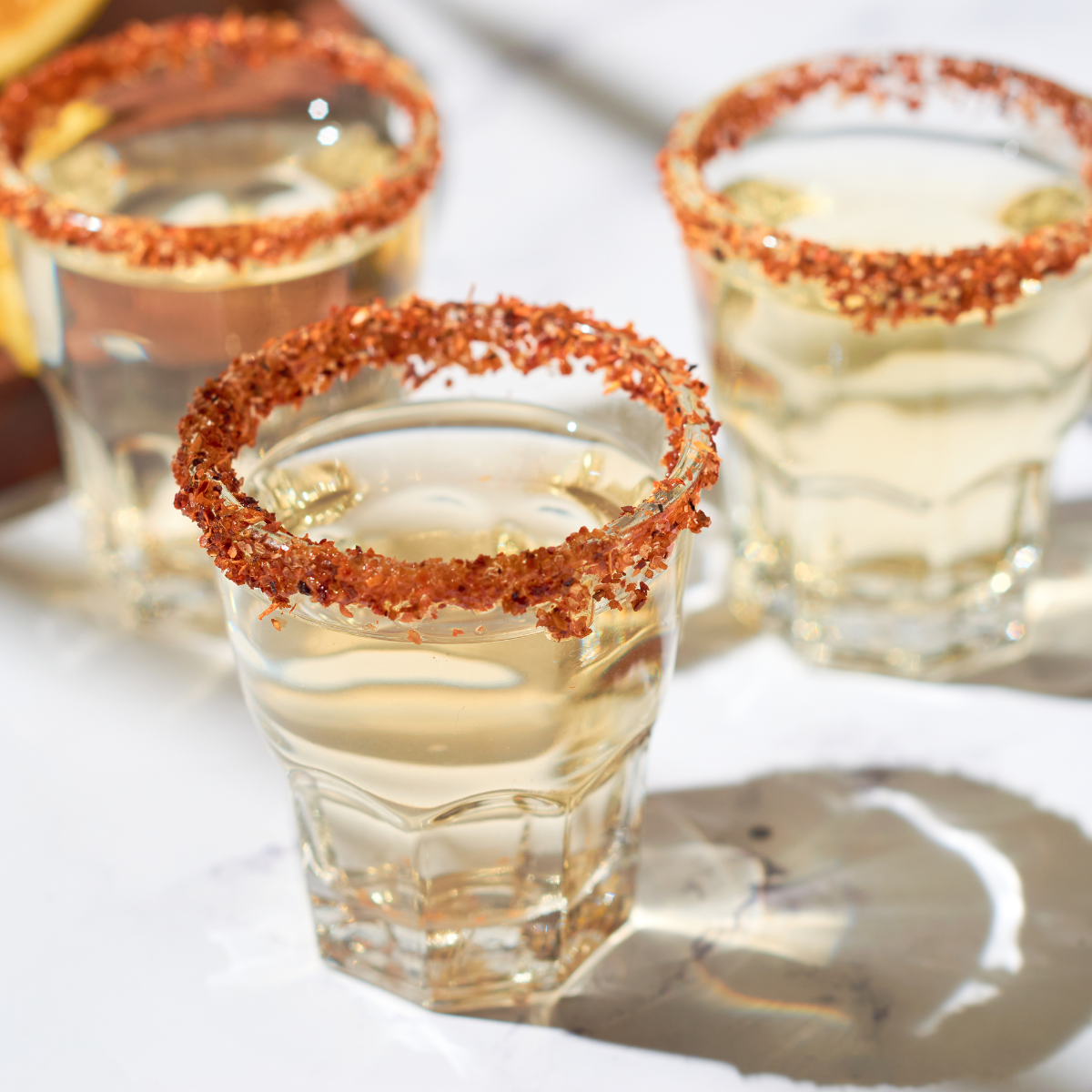What Flavor Is Mezcal?
We already know that mezcal is an astounding experience for all your senses. The smoky aroma draws you in, and its intricate flavors dance on your tongue. And oh, the finish is divine—it lingers on your palate, reminding you of the agave’s journey from the fields to the bottle. But how can we better understand the flavors in a single little glass? What flavor is mezcal anyway?

The Mezcal Flavor Wheel
The Mezcal Flavor Wheel is a great visual guide to enhance the mezcal-tasting experience. This fun wheel helps categorize the diverse flavors and aromas of mezcal, making it easier to recognize and describe what you’re tasting. By helping to bridge the gap between the rich sensory experience of mezcal and your ability to put it into words, the Mezcal Flavor Wheel makes tasting mezcal more fun and rewarding.
- Enhances Sensory Appreciation: The wheel helps tasters focus on individual elements of mezcal’s flavor profile, encouraging a deeper appreciation of its complexity.
- Educational Tool: For those new to mezcal, the wheel provides a structured approach to tasting, making the vast array of flavors more approachable and understandable.
- Celebrates Diversity: Mezcal can vary widely depending on factors like agave species, production methods, and regional influences. The flavor wheel highlights this diversity, offering a glimpse into the rich cultural heritage behind each bottle.
- Promotes Mindful Tasting: By slowing down and considering each aspect of the flavor wheel, tasters become more mindful of the nuances that contribute to mezcal’s unique character.
Mezcal’s Different Flavor Components
The mezcal flavor wheel is categorized into main groups, subgroups, and more detailed tertiary flavors.
Here’s a concise overview of its scope.
- Fruity: This category captures the sweet and tangy notes reminiscent of various fruits.
- Subcategories: Tree fruit, tropical fruit, berries, dried fruit.
- Examples: Mango, pineapple, apple, guava, banana, lemon, orange, grapefruit, cranberry, and pomegranate.
- Chemical/Mineral: This category includes flavors associated with chemical and mineral notes.
- Subcategories: Petrol, pungent, sulphur, mineral.
- Examples: Rubber, diesel, gasoline, nail polish remover, soap, coal smoke, burnt match, wet newspaper, and rotting wood.
- Floral: This category encompasses the delicate and aromatic notes of various flowers.
- Subcategories: Fragrant, fresh.
- Examples: Lavender, rose petals, chamomile, elderflower, and violets.
- Green: This category captures the fresh and vegetal flavors.
- Subcategories: Leafy, vegetable.
- Examples: Green leaves, bell pepper, asparagus, artichoke, peas.
- Earthy: This category includes flavors reminiscent of soil and organic matter.
- Subcategories: Smoky, moldy, funky.
- Examples: Charred wood, wet soil, mushroom, cheese, leather, barnyard.
- Grainy: This category encompasses flavors associated with grains and cereals.
- Subcategories: Milled grains.
- Examples: Oats, corn, wheat, barley.
- Woody: This category captures the flavors of wood and spices.
- Subcategories: Spice, lumber.
- Examples: Cinnamon, nutmeg, cedar, sandalwood.
- Sweet: This category includes the sugary and dessert-like notes.
- Subcategories: Sugar, caramel, nuts.
- Examples: Honey, vanilla, butterscotch, pecan, almond, hazelnut.

How to Taste Mezcal
Discovering the wonderful flavors of mezcal is so much fun when you use the mezcal flavor wheel. It helps you identify and savor all the different tastes!
Check out this step-by-step guide on how to use the mezcal flavor wheel:
Preparation
Taste a variety of mezcals, ideally from different agave species or regions, to compare their distinct flavor profiles.
- Set Up Your Tasting Area: Ensure a clean, well-lit space free from strong odors. Use appropriate glassware, such as copitas or tulip-shaped glasses, to concentrate the aromas.
- Gather Your Tools: Have a notebook or tasting journal, a pen, and a copy of the mezcal flavor wheel handy for reference.
Observation
- Visual Inspection: Pour a small amount of mezcal into your glass and observe its color and clarity. Note any differences in hue, which can indicate aging or production methods.
- Swirl and Sniff: Gently swirl the mezcal to release its aromas. Take a few short sniffs and a deep inhalation to capture the full range of scents.
Tasting
- Initial Sip: Take a small sip and let it coat your mouth. Pay attention to the initial flavors that hit your palate.
- Mid-Palate: As you hold the mezcal in your mouth, identify the mid-palate flavors. These can be more complex and layered.
- Finish: Swallow the mezcal and note the lingering flavors. The finish can reveal additional notes that were not immediately apparent.
Recording
- Use the Flavor Wheel: Refer to the mezcal flavor wheel to categorize your identified flavors. Start with the primary flavors and move towards secondary and tertiary notes.
- Take Detailed Notes: Write down your observations for each mezcal, including the visual, aromatic, and taste characteristics. Use descriptive language to capture the nuances of each flavor.
Practical Tips
- Refine Your Palate: Regularly practice tasting different mezcals to develop a more sensitive palate. Compare notes with others to broaden your understanding.
- Focus on Specific Flavors: Concentrate on identifying one primary flavor at a time before moving on to secondary and tertiary notes.
- Cleanse Your Palate: Between tastings, cleanse your palate with water or a neutral food like bread to avoid flavor contamination.
Remember to use the mezcal flavor wheel! It will enhance your tasting experience and help you discover all the fantastic flavors of mezcal. It’s an excellent tool for enjoying mezcal on your own and for professional use.
Why Are There So Many Mezcal Options?
Mezcal is diverse because it comes from various agave species, traditional production methods, and unique regional influences in Mexico. Each agave type gives mezcal its unique characteristics, and things like the soil, climate, altitude, and production techniques add even more complexity. As a result, there’s an incredible variety of mezcal to enjoy, each with its flavor and story.
- In Oaxaca, mezcal made from this agave is often called “Barril” and can have smoky, earthy, and vegetal notes.
- The same agave might be referred to as “Cuixe” in Puebla. Its flavor profile includes mineral and herbal notes.
- In Michoacán, this agave might be known as “Cirial,” producing mezcal with unique regional characteristics.
These variations show how much mezcal options vary based on the region and methods used. Don’t worry too much about the incredible variety. Just remember, if one mezcal doesn’t quite hit the spot for you, there’s probably another one out there that’s perfect for your taste!
Variations Due to Agave Types
The type of agave used in mezcal production is one of the most significant determinants of its flavor profile. Numerous agave species exist, each imparting unique characteristics to the final product.
- Diverse Agave Palette: Over 54 species of agave are commonly used for mezcal production, each with its unique flavor profile.
- Wild vs. Cultivated Agave: Wild agaves, such as the Cuixe and Madrecuixe, grow in specific microclimates and are subject to the whims of nature, resulting in mezcals with profound depth and unpredictability in flavor. Cultivated agaves, on the other hand, offer more consistency but still vary significantly in taste depending on the farming practices and terroir.
Influence of Production Methods
- Roasting Techniques: The traditional method of roasting agave in earthen pits imparts a signature smokiness to mezcal. However, the duration of roasting and the materials used (like different types of wood) can alter the intensity and quality of the smoky flavor. Some producers may experiment with roasting durations and temperatures to achieve a desired balance between the smokiness and the agave’s natural sweetness.
- Fermentation and Distillation: The fermentation process, which can vary in length and conditions (open-air vs. closed tanks), influences the development of flavor profiles, contributing fruity, yeasty, or even funky notes to the mezcal. The type of still (copper pot stills vs. clay pot stills) used in distillation further affects the flavor, with clay pot stills often yielding mezcals with a more earthy and mineral-rich profile due to the material’s porous nature.
- Water Source: The water used in the production process plays a subtle yet crucial role in shaping the final taste of mezcal. Spring water, rich in minerals, can add a layer of complexity and softness to the spirit, while rainwater might introduce a cleaner, more neutral profile.
- Artisanal vs. Industrial Production: Artisanal mezcals, produced in small batches using traditional methods, tend to have a more pronounced individuality in flavor, reflecting the hand of the maker and the nuances of the specific batch. Industrial production methods, which aim for consistency and volume, may sacrifice some of these unique characteristics in favor of uniformity.
Variations Due to Aging
The flavor of mezcal can be influenced by the aging process, or lack thereof, which is divided into three main categories.
- Joven (Young): Clear and unaged, offering the purest expression of the agave flavors with pronounced vegetal, fruity, and earthy notes.
- Reposado (Rested): Aged for 2 to 12 months in oak barrels, adding subtle flavors of vanilla, caramel, and wood while softening the spirit.
- Añejo (Aged): Aged for at least one year in oak barrels, resulting in a smoother, more complex flavor with more pungent wood notes, along with hints of spice and dried fruit.
Regional Styles
As mentioned, various regions in Mexico are renowned for their unique mezcal styles, shaped by local traditions, agave species, and production methods. Even the same agave species can yield different characteristics based on microclimates, and the production methods can vary significantly.
- Oaxaca is known for offering a wide variety of mezcal styles and flavors due to its diverse agave species and traditional methods.
- Guerrero is known for its fruity and floral mezcals, often with a lighter, more delicate profile.
- Durango produces mezcals with unique mineral and herbaceous notes, reflecting the region’s terroir.
- Puebla is recognized for rich, earthy mezcals, often made from wild agave species like Tobalá.